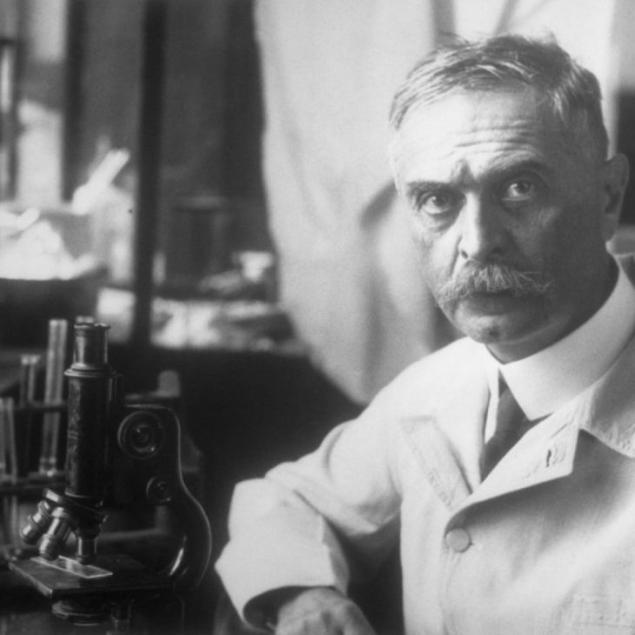746
With these 8 little-known people, we still walk, breathe and talk

from time to time, the world seems dark and treacherous place, but it could definitely be more dangerous and darker, if not for people who have spent their lives on something to improve our. What a pity that many of us never about them and not heard. Let us restore justice! < Website offers to learn about these forgotten heroes to mentally thank them for their work.
Lieutenant Colonel Stanislav Petrov, in 1983, saved the world from nuclear voyny26 September 1983, the year the Soviet Lieutenant Colonel Stanislav Petrov was on duty at the command post Serpukhov-15, 100 km from Moscow. The Cold War was in full swing. The objective was to observe the Petrova sensors space early warning system for nuclear missiles launch. If sensors are notified of a nuclear attack, it would be the responsibility of Petrov immediately notify the leadership of the country, which decides whether to strike back.

Thus, on 26 September computer Petrova notified about the launch of missiles from a US base. Despite the terrible threat, Colonel retained complete composure. < He analyzed the sensor readings and confused by the fact that the missile launch was made of a single point, and the missiles themselves were only a few. Petrov came to the conclusion that a case of system failure, and did not inform the high command. As it turned out, lit sensors reflected from clouds sunlight. This problem has been corrected.
Iron Petrova composure may have saved the life of all of us, in fact, start from this error a nuclear war, the consequences would be devastating.
January 19, 2006 in New York at the UN Stanislav Petrov headquarters was awarded the special prize of the international public organization "Association of World Citizens." It is a crystal figurine "Hand holding the globe" engraved on it the inscription "To the person who prevented a nuclear war».
John Leal cleared voduVpervye chlorine used to clean the water supply system of the English town of Maidstone, after there was an outbreak of typhoid. Also, chlorine used physician-bacteriologist John Leal to disinfect homes from water detected infections. Despite these first attempts to touch the sanitation, the world is still playing with the plumbing in the game "who now die from diarrhea»?
The idea of continuous chlorination of tap water Leal was announced in 1908. Above it was described to them in an incredibly boring book on plumbing.
< It is estimated that contaminated water has claimed more lives than all the world wars put together. So clean tap water in millions of taps around the world - nothing less than a miracle. It is possible, of course, that the Government adds chemicals to the water to control our thoughts, but we all zdravstvuem today thanks to the contribution of John Leal.
Nils Bohlin made cars bezopasneePo experts, Nils Bohlin, a Swedish inventor and a wonderful person saved more than a million lives in the 50 years that have passed since the invention of their three-point belt.

Until 1959, the seat belts if they are generally present in the vehicle is a simple lap belts, which in case of an accident allowed little more than to enjoy their own internal bleeding. Passengers were secured rarely, only for racers it was commonplace. They used a four-point belt to keep body parts and organs in place. But despite the fact that these belts were deemed much safer belt, drivers flatly refused to use them.
Then Bohlin understood that a difficult task in front of him - to make the process of self-preservation as simple and convenient as possible. < He had to overcome human laziness, inventing a handy strap which can fasten with one hand. What he achieved in 1959 after lengthy trials.
Thanks to the perfect comfort and safety proportions carmaker Volvo (which worked Bolin) made the invention available to other manufacturers. This was to freshen up view of consumers to self-preservation and to prevent the transformation of children in "shells" during heavy braking.
Gertrude B. Elion opened our lekarstvaV the first half of the XX century the prospect of being a woman and a scientist at the same time was not particularly rosy, but, thank God , Gertrude B. Elion firmly made during this period. Despite graduating from college with honors, she was deprived of scholarships, since it was only guys available. When Gertrude still received a master's degree in chemistry, she was waiting in the wings in the laboratory (including because it was "too attractive appearance"), until finally he settled in office checking frozen fruit for the presence of mold.
< br>

But after World War II men's scientific world suddenly I felt a shortage of staff, and the young pharmacologist finally made a breakthrough. She applied for a job as a biochemist, led by Dr. George Hitchings and soon became his assistant in the research.
Between experiments, the pair has published more than 200 works (named Gertrude B. Elion in the beginning, it was very unusual for that time). They also pioneered a new method of production of drugs called "rational development of drugs». Instead of using the previously used method of trial and error ( "shot in the dark with the hope of survival"), they studied the biochemical mechanisms of viruses and bacteria in order to adapt the drugs for their treatment. Using this technique, Gertrude B. Elion found a huge number of new drugs, including the first antileukemic and anti-malarial drug, first immunosuppressive antibodies used in organ transplantation, antibiotics for the treatment of meningitis, sepsis and bacterial infections urinary and respiratory tract, and many others. She even opened Zovirax herpes, which you probably occasionally treat colds on the lips.
Alan Turing saved a lot of people during voynyImya British mathematician and cryptographer Alan Turing has long been consigned to oblivion. First, because most of his works subject to the Official Secrets Act, and, secondly, in the 1950s it forcibly treated for homosexuality.

It is known that during the Second World War in the work of Turing was a four-year break. Taking into account that for each year of the war Europe saw about seven million deaths, achievements Turing could save 21 million lives. Alan Turing worked at the famous Bletchley Park that housed the main cryptographic unit of the UK. Awesome mathematician and logician engaged in all kinds of projects, but most of all pored over the creation Bombe - electro-mechanical machines, capable of decrypting Nazi Enigma messages. By 1942, the team that breaks open daily until 1 kDa encodings reduced the duration of the armed conflict for years.
Can you imagine how many lives, both military and civilian, have been saved thanks to this work, many people were able to have a family that could not be. It is possible that your ancestors have saved the brainchild of Turing.
Edward Jenner made the first privivkuSoglasno estimates, its developments vaccination Jenner saved the lives of 530 million people. The methods that were originally developed by them, had the greatest influence in the history of mankind to fight the disease.

History Jenner's discovery passed from mouth to mouth, dozens of generations, so something can be misleading, but the principles, one way or another, are unchanged. Jenner, working side by side with dairy farmers in Gloucestershire, said that they are not sick during a smallpox epidemic. Then the doctor suggested that farmers are already ill with a milder form of vaccinia virus, infected by cattle and thus received immunity from human disease.
< Jenner decided to experiment, instilling a healthy eight-year boy lymph from pustules milkmaids suffering from cowpox. Of course, the kid slёg disease. Six weeks later Jenner continued to experiment even more reckless and repeated the procedure - this time he introduced child lymph smallpox patient. Fortunately, the boy was still alive, the doctor on the loose, and the world received the first vaccine.
If you ever get vaccinated, take a deep breath and thank Edward Jenner. And if you have not done due to medical contraindications or because "I read such a terrible article on the Internet", then you lucky to avoid certain fatal diseases due to such things as herd immunity.
Louis Pasteur discovered germs and mikrobyProdolzhaya topic other nasty things, let us turn to Louis Pasteur. His century was the prevailing theory of "spontaneous generation", and scientists generally believed that the bacteria appear out of thin air ostensibly to spoil your milk and your day. But Pasteur was not sure of it, and began to experiment. He took flasks of sterile nutrient medium, some uncorked on the busy and dirty streets of Paris, the other in the fresh alpine air. In all of these flasks culture medium developed actively, and in the sterile, no uncapped tubes - remained untouched His experiments Pasteur revolutionized the notion of germ theory, proving that the disease can be prevented and destroy in the bud <.. br>

Although best known scientist brought the invention of pasteurization process, named in his honor, the research of Louis Pasteur were much larger. Microbial theory - it is the foundation on which we largely built on the idea of health and safety everywhere - from restaurants to hospitals. Pasteur also continued its work relating to the vaccination of Jenner, opening the door to the creation of many new life-saving vaccines.
Karl Landsteiner discovered the group kroviPoka we did not have any idea about the blood groups of people regularly died of blood loss as a result of accidents, birth, ulcers . In general, bad luck and bad news was any event, from which a person loses more blood than his body was able to make up their own. And the consequences of the wrong blood transfusion group was not only the "sense of impending doom", but also kidney damage, blood clots and death. Doctors tried to transfuse blood, and before the opening of the groups, but the positive results have been a big success.

In 1901, Landsteiner discovered that blood is not all the same, and different people, it has its own characteristics that make the types incompatible with each other, mixing and leads to death. This dispelled all previous concerns about blood transfusions and turned before a risky procedure and everyday routine, which saves lives every day.
via www.publy.ru/post/20193
The stunned 80 facts about Japan through the eyes of Russians
These rare color photos of Paris were made 100 years ago and they are amazing!























